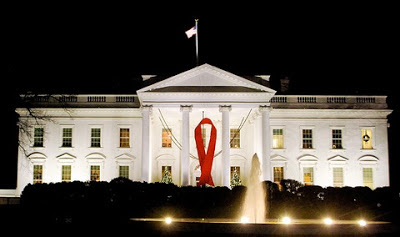By Kevin Maloney
On April 2nd & 3rd, the ADAP Advocacy Association (aaa+) hosted its ADAP Solutions Summit to identify improvements and reforms that could enhance the AIDS Drug Assistance Program (ADAP). As a consumer of ADAP services, I found these 2 days -- which brought consumers, industry, advocates and other stakeholders to the same table for the first time -- to be very productive. I met many folks, some consumers, some not, but all with one commonality; all indebted to the cause of helping ensure that every American has access to the care and treatment they need to remain alive, healthy, and productive. At no point was anyone's intentions or commitment called into question, and that is the way it should be done!
As a consumer of ADAP services, I want to touch on the aspects of some of the proposed enhancements that I feel could have an immediate impact by bringing more people into care, coinciding with President Obama's goals set forth in the National AIDS Strategy (NAS). Before I do so, I feel obliged to share with you my brief personal story.
The date of March 3rd, 2010, will be etched into my mind for the rest of my life. My doctor called me, and said “Kevin, I need you to come into the office.” When I walked into his office, and the receptionist staff was dead silent, they couldn’t even look me in the eyes. My doctor laid a paper down in front of me and it read; PCR by DNA HIV – Reactive. I tested positive for HIV-infection. I was asked how I felt psychologically, and I said “fine” (even though I was scared), and then I left the office.
Immediately after leaving his office, I started to put an action plan into place. First, I called Callen-Lorde (a CBO in NYC), and was offered an appointment the very next day. Then I called my HR department where I was working, to find out about taking a leave of absence. I learned of the Family Medical Leave Act (FMLA), and under this federal law it allowed me the time off that I needed to get to my doctor appointments, begin my chosen Anti-Retroviral Therapy (ARV), seek out support, and to learn everything that I could about living with this disease.
A month later with follow up labs, I was then told I had Hepatitis C, genotype 1a. WHAT?!? I felt like someone punched me in the stomach, and I fell to the floor, because this diagnosis through me for a loop. My doctor said is mainly contracted by people who share needles; I wasn’t an intravenous drug user (IDU) in my instance it piggy backed onto the HIV-infection. Now I was angry; how could this happen to me? I knew nearly NOTHING about this disease. So, I went home to read more about it, and found out I could clear the virus. I found a doctor in NYC , and soon after I began the dreaded interferon + Ribavirin therapy. At the forth week, I had a sustained virologic response, and at the 6 month post-treatment, I still had an SVR, I have cured Hepatitis C.
During this time of personal distress I coined the phrase “Rise up To HIV.” It started out as a personal platform to tell my story, and has since morphed into a personal AND advocacy platform. At a time when I could have given up, I chose to rise up, stand out, and speak up about my dual diagnosis, and about issues facing the community of 1.2 million people living with HIV/AIDS, including those who are co-infected with Hepatitis C that I belong to.
I can say that I am alive today; equally important, I am healthy because of the AIDS Drug Assistance Program granted me access to the life-saving medications that I needed to survive. As ACT UP celebrates its 25th anniversary, it is hard not to see ADAPs existing today. Many individuals and leaders got fed-up with watching dozens upon dozens of their friends and loved ones die. They themselves -- some of them on the brink of death -- started a movement to recognize AIDS and to demand treatment and services for those infected with the disease. To them, I say "thank you." We have you to thank for the Ryan White Comprehensive AIDS Resources Emergency (CARE) Act, as well as the AIDS Drug Assistance Program was formed.
There are thousands more PLWHAs who share similar stories, or ones even more dire.
Today, ADAP is facing the "Perfect Storm" and some would even suggest that it is in grave danger. If full funding for ADAP and other vital HIV/AIDS services is not restored to the levels of the law's legislative intent, and increased to keep up with the demand, then we WILL have flashbacks to the 1980s and 1990s; people will be dying. This time, not because we have no medicine to treat the disease, but because we don’t have the funding to provide it to everyone who needs it.>p>
Currently, there are over 3,000 people across 10 states on ADAP wait-lists. Though this number does not reflect individuals in states that have reduced financial eligibility, or capped enrollment, it provides a very public face for the crisis. I’ll share with you some scary statistics:
1.2 million Americans (believed to be much higher) are living with HIV/AIDS;
Of these 1.2 million, it is estimated that only 20 percent of PLWHAs are receiving care and treatment;
Approximately 20 percent of HIV-infected Americans do not know they are infected;
Only 28 percent of PLWHAs have undetectable viral loads in the United States; and
1 in 3 PLWHAs are co-infected with Hepatitis C.
We are facing a public health crisis, unseen since the epidemic began. The weak economy has crippled state budgets that pay into ADAP, and the federal government's commitment as a share of total spending on the program has declined over the last 5-6 years. In addition, prevention initiatives and other supportive services such as HOPWA funds have dried up in communities across the nation.
Further, many states have employed cost containment strategies, such as reduced formularies, lowered financial eligibility levels, implemented client cost sharing, or program enrollment caps. These strategies have disqualified individuals who would have previously qualified for ADAP.
Without reliable access to the medications, which cost patients under the AIDS Drug Assistance Program an average of less than $10,000 a year, PLWHAs are more likely to acquire opportunistic infections, develop full-blown AIDS, transmit the virus and require expensive hospitalizations, and even die.
On May 12th, 2011, the University of North Carolina at Chapel Hill led an international study that showed early treatment with antiretroviral therapy prevents HIV transmission. The result of the study (HPTN05) was that those taking ARV were 96 percent less likely to pass on the disease than those who didn’t take ARV. This critical new finding convincingly demonstrates that early treatment of infected individuals can have a major impact on the spread of the epidemic.
Combined, the advanced scientific studies, new treatment guidelines, and new prevention messages/campaigns at the national, state, and local level are increasing the demand on ADAPs. That demand is far outpacing the required funding to meet the needs of PLWHA. It is fueling this crisis, but it has to stop now! HIV/AIDS is still a communicable and deadly disease, and our government must continually remind themselves of these facts and provide the adequate funding to provide proper treatment to those already infected, while also preventing the spread of the virus to others.
As a consumer who has self-maneuvered the complexities of the ADAP system, I want to highlight the enhancements talked about during the ADAP Solutions Summit. I believe that they will be most beneficial to bring more people into care, and retain those already receiving ARVs.
Uniform FPL eligibility at 500% for ALL ADAPs in all states, Territories, and Dependencies
Utilize peer navigators
Increased education in the community on ADAP, Patient Assistance Programs and co-pay assistance, as well as insurance continuation programs administered under ADAP
Utilize Social media at the federal, state, and local level to improve access to information
Face to face access to a pharmacist, instead of mail order, and pharmacy of choice
Development of a common portal with the ability to be client driven
Recertification to happen every year, instead of every 6 months and more user friendly
Co-Infected individuals should have access to Hepatitis C drugs through ADAP
ADAPs should help pay deductible spend down for people with private insurance
If a client moves to another state, the old state ADAP should provide 90 days’ worth of medications prior to termination to allow a smooth transition to the new state
ADAPs should take into consideration Net Income, NOT Gross Income to determine financial eligibility
Fortunately I now live in Washington, DC and I was living in NY prior; both places have a very robust ADAP program. If I were in the White House I would conduct a very thorough and comprehensive review on each state ADAP, and begin the discussion on how best to move forward with a uniform AIDS Drug Assistance Program that can serve everyone regardless of geographic location, or socio-economic status. Too many people are falling through the cracks.
Again I ask: "Why do I have access to the care and treatment needed to stay alive, remain healthy, and productive; while others are on wait-lists or who have been shut out of care because of cost containment strategies?" Of course, it is a rhetorical question. This is not right, and this is not the American way!
I encourage you to read the Final Report issued by the ADAP Advocacy Association after its ADAP Solutions Summit. It can be downloaded here: http://www.adapadvocacyassociation.org/publications.html














